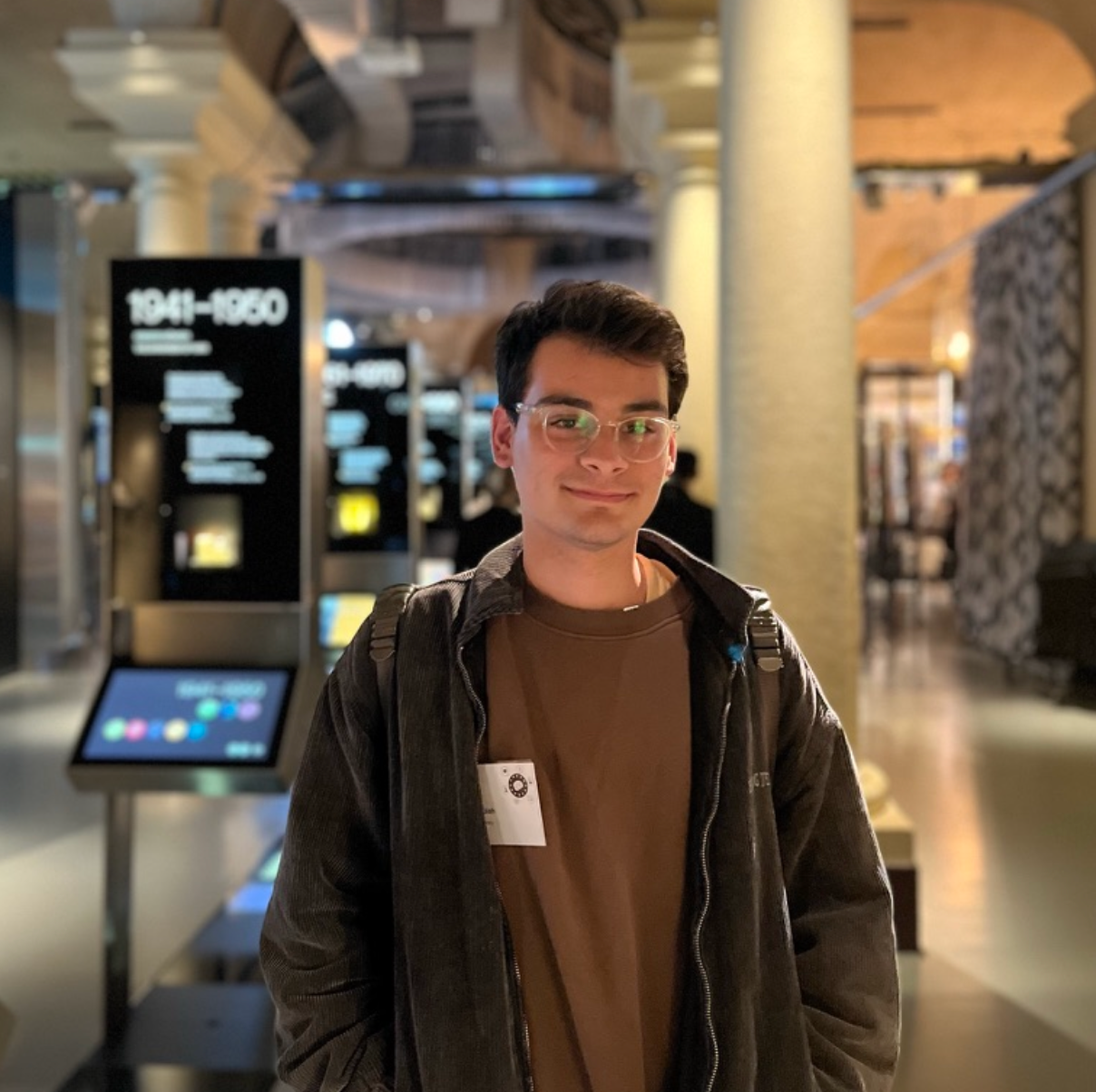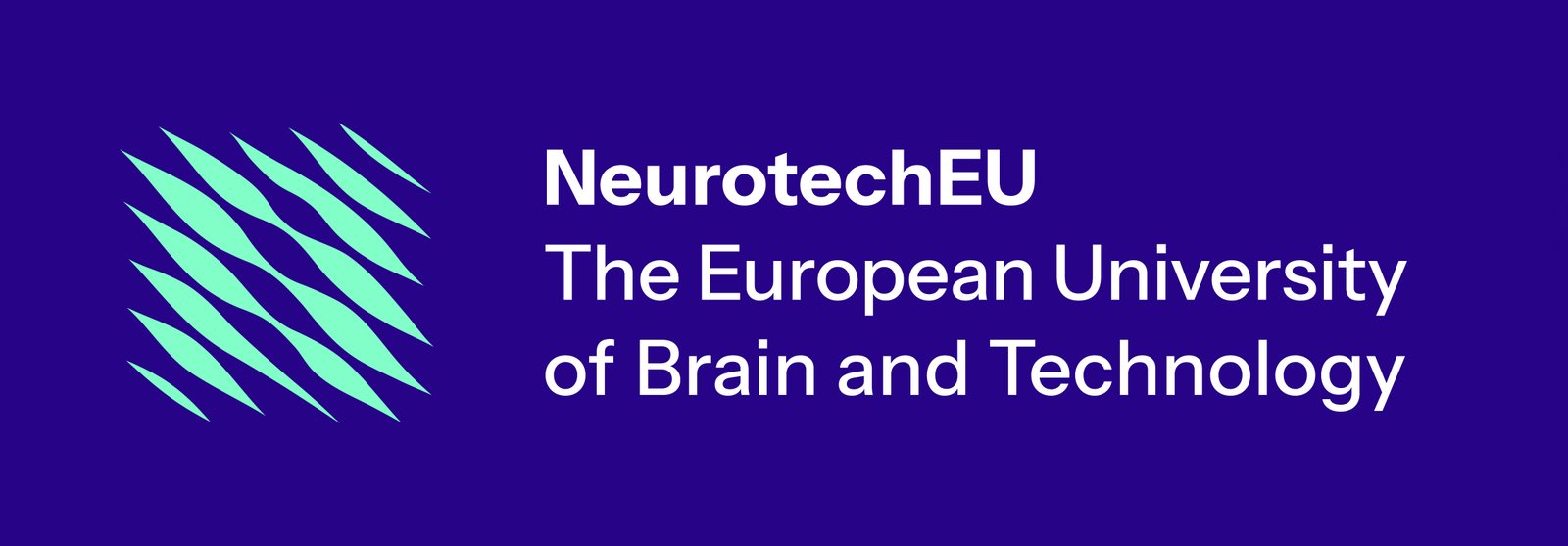Taha, the co-Chair of the Student Council: "It’s not just about research — it’s about understanding the broader world around neuroscience"
With each leadership team serving a one-year term —and individuals allowed to serve a maximum of two years in a specific role— the council is designed to remain dynamic, allowing for fresh perspectives and new voices to regularly contribute to its direction. Re-elections take place annually, ensuring that the structure remains inclusive and forward-looking.
Taha is a master student in Molecular Biology and Genetics at Boğaziçi University, Turkey. His passion for neuroscience and his belief in the future of neurotechnology led him to join the alliance — and now to take on a leading role within it.
We sat down with Taha to learn more about his journey, what motivates him, and how he envisions shaping the council's role in the future of NeurotechEU Alliance.
What made you choose to join the student council?
The first time I attended a NeurotechEU event was the Hackathon that took place at the Karolinska Institutet (KI) in Stockholm. There, the idea really just came to me organically. At that time I was simply a student from Boğaziçi University attending one of the NeurotechEU events.
That experience opened my eyes to the level of collaboration and the amount of neuroscience activity happening through NeurotechEU. It really inspired me, because the alliance is clearly thinking about the future of neuroscience and neurotechnology. It felt so aligned with my own career goals and what I hope to see in the world. I genuinely believe neurotechnology will be a key part of our future, and I want to contribute to making it better, more advanced, more scientific, and more grounded in reality.
And what made you decide to become a Student Council representative specifically?
I really appreciate that NeurotechEU has a Student Council. Since we, as students, are the future scientists, staff, and policymakers, I believe it’s incredibly important that our voices are heard in these kinds of collaborations and alliances.
For example, at Boğaziçi University, there are many students who are interested in neurotechnology but haven’t found a proper platform to express that interest or take part in related activities. NeurotechEU creates that bridge, and I value the opportunity to represent my university to bring forward the needs and aspirations of our students.
How do you gather and represent those students' needs?
From a student’s perspective, the local Synapses Clubs are currently the most functional part of NeurotechEU. It allows us to officially come together with other students who are passionate about neurotechnology. Through these gatherings, I can learn what students think about the alliance, its future plans, and how things like the Campus+ platform should be structured to improve accessibility. Firstly, I’d say I gather input through events of the Synapses Clubs .
But beyond that, since I’m also a neuroscience student myself, most of my friends are in the same field. When I talk to them about my role, NeurotechEU, or theStudent Council, they naturally share their thoughts. That feedback is really valuable — I can take it and bring it to the Board of Rectors or the Board of Governors. In that sense, I see us as a bridge between the leadership of NeurotechEU and the students.
Did you have any previous experience doing something similar?
Actually, yes, though not in neuroscience. I was involved in an art-focused student club where I gave voluntary workshops and courses for about two years. We built a real sense of community there — it was a completely voluntary effort, we weren’t paid, and it was all student-led.
We organized events, created a community hub, and brought people together around art-related topics. I was one of the leads, and while it was a different domain, the experience taught me a lot about working within a community and organizing around shared interests.

With that background, what do you think you bring to the Student Council in particular?
I think one of the biggest challenges in communities like this is figuring out how to organize in a way that really engages people. For example, finding a time that works for everyone or creating an event that people actually want to attend.
So, I’d say it’s essential to really understand your audience. We talked about this a lot during the Ki Staff Training Week — it’s not enough to just be members or leaders, we should also be friends with the community we’re part of. We have to communicate, engage, and know what people are thinking. Otherwise, the community won’t be sustainable.
So I’d say my strength is in fostering that engagement — in building real friendships and meaningful connections beyond just formal roles.
What do you think is the most challenging part of your role right now?
It’s not that it’s difficult, but it definitely demands a lot. Being both a neuroscience student and a co-Chair in a major alliance like this comes with a lot of responsibility.
Being the “bridge” also carries weight, because you have to communicate your fellow students’ thoughts and ideas to rectors and other leadership figures with complete clarity and honesty. You really have to respect what they’ve told you and pass it on as truthfully as possible.
At the same time, you have to take the ideas and decisions from the governors and explain them clearly back to the students. So the role of the bridge isn’t just symbolic,it’s a real and demanding responsibility.
What do you think makes a scientist a good scientist?
To be a good scientist, it’s not enough to just read books and articles. We also need to understand ourselves, engage with others, and learn about different perspectives — including those outside of academia.
It’s important to hear what the industry thinks, what policymakers think, and so on. That way, our research and work in the lab can actually be meaningful for society.
I think that’s exactly what NeurotechEU is trying to achieve, and I’m really happy to be part of a structure where scientists, policymakers, and communication managers all work together. It’s not just about research — it’s about understanding the broader world around neuroscience.

